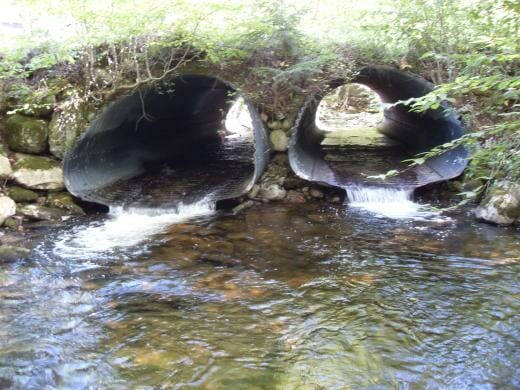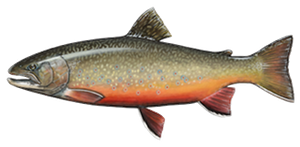
Goals
No matter how clean and cold the water is for brook trout, a bountiful population cannot occur without a significant amount of uninterrupted stream mileage to allow the fish to move throughout the length of stream.
Streams like Clark Brook, Oliverian Brook and Eastman Brook in western central New Hampshire have habitat characteristics of excellent coldwater fisheries. However, dams and poorly designed culverts cause range fragmentation in all three watersheds.
TU has partnered with Connecticut River Watershed Council (CRWC) to offset consequences of land use and human development. TU and CRWC received grant funds from the New Hampshire Charitable Foundation’s Upper Connecticut Mitigation Enhancement Fund (MEF) to assess road-stream crossings and to identify and prioritize habitat restoration projects to provide more trout habitat.
The information collected in the assessment not only helps towns, landowners and the state conserve and strengthen native brook trout populations, but has also helped the town of Haverhill identify and prioritize the replacement of a crossing that would be at risk to future floods. By replacing the current pair of squashed metal culverts with a bridge, formerly isolated habitat upstream of the crossing will now be available in time for the fall trout spawning run.
Tactics
In April and May of 2013, Trout Unlimited completed an inventory and assessment of all bridges and culverts in the Clark, Oliverian, and Eastman watersheds. This data has been included in the New Hampshire Geological Survey culvert database. Copies of the final report were given to CRWC, MEF and the four New Hampshire towns in which the study took place: Warren, Haverhill, Piermont and Benton.
The data collected during this assessment coupled with secured funding will be used to restore a key crossing on Oliverian Brook in 2015. By replacing a pair of 9-foot squashed corrugated metal culverts with a new 32-foot bridge, the project will connect more than 10 miles of contiguous trout habitat upstream while improving the overall health of the Connecticut River watershed. Not only will this help to fulfill TU’s mission, but also those of the CRWC and MEF.
Victories
Assessment of human impact must always occur in order to ensure we are sustaining our natural resources, such as native brook trout.
In 2014, Trout Unlimited teamed up with CRWC and the town of Haverhill to prioritize the replacement of a crossing on Oliverian Brook and raise funds for the project. Completed in 2016, the project included installation of a 42-foot bridge that opened 6 miles of habitat, much of it on the White Mountain National Forest.
Project partners included: Town of Haverhill, Connecticut River Watershed Council, Upper Connecticut River Valley TU Chapter, US Forest Service, New Hampshire Charitable Foundation, Orvis, NH Fish & Game Department, and the National Fish & Wildlife Foundation.
Staff Contact
Colin Lawson, New England Culvert Project Coordinator
Author of this Page
Colin Lawson, New England Culvert Project Coordinator
clawson@tu.org Places Clark Brook Eastman Brook Oliverian Brook Connecticut River New Hampshire Species
Eastern Brook Trout

Issues
Climate Change
Dams
Roads + Development
Solutions
Reconnect Programs
Risks to Fishing

